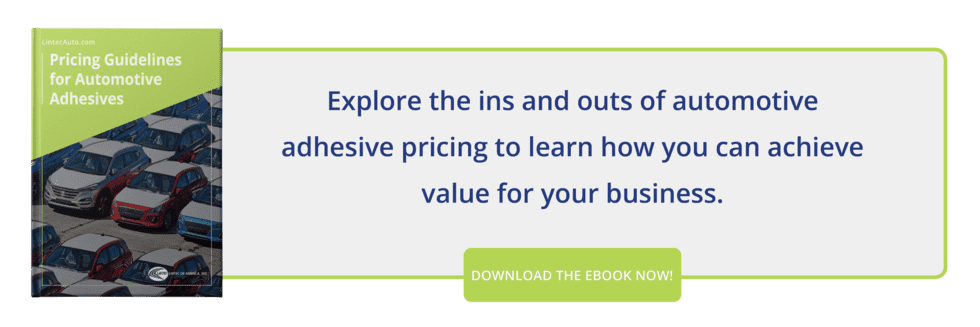The final price quote is just the tip of the iceberg when you’re purchasing automotive films. As you compare your options, it’s critical to consider not only the price (versus your target) but also factors like:
- Material traits relative to your project needs
- Total value-added
- The net effect on the production/assembly process
- The expected service life of the film (warranty)
- The capacity of the supplier to meet your needs
All of these details—and more—can influence the cost-effectiveness and relative quality of the vehicle film for your project. The price on the quote won’t include these kinds of hidden costs or advantages, so it’s up to you to evaluate them. Here are a few tips to help.
Four Pillars for Comparing Automotive Films
1. Price
Purchases in the automotive supply chain are notoriously price-focused. Lost in the shuffle, sometimes, are the differences between the price you pay and the relative quality of the product. Some factors that can affect price include:
- The thickness of the auto film
- Strength of the adhesive
- The volume of the order
Going in with a firm price target can help a supplier show you alternatives in the same range that may meet or exceed your specs. For a vehicle protection film, 8 mils of thickness is a good baseline for robust performance combined with near-invisibility. Suppliers that suggest thinner gauge film may be compromising quality to meet your price point.
2. Production Costs
Beyond the cost of the automotive films per unit, there will be coincident costs to altering your production process. The best-case scenario is that the automotive films save you both time and money over a prior solution (such as paint replacement films negating a complex painting process).
However, you’ll want some sense of how automotive films compare to other, similar films in terms of:
- Steps in the application process
- Equipment or tools required
- Preparation (are they die-cuttable?)
- Curing time (if any)
These will vary by the specific adhesive layer, purpose/location of the film, and manufacturer. Seek clear answers to all of them to effectively evaluate the net savings or costs the purchase will have on your process.
3. Warranty
Remember that price is not the same as cost or total end value. You may—in the long run—realize savings on new automotive films even when the initial price is higher than a similar option if it significantly outperforms and outlasts the alternatives. Long-term performance provides an increase in value that gives you a competitive advantage.
Ideally, automotive films will last throughout the service life of the vehicle. AARP reports that the average lifespan of a car is now almost 12 years. This means that a supplier warranty of 10+ years is necessary for the peace of mind you’ll want when committing to the purchase.
4. Supplier Capacity
Small, large, and niche purchase orders all present unique challenges for your supplier. Limited orders may require suppliers to make time-intensive and costly adjustments to equipment without lasting utility. Too much volume may stretch their capacity to fulfill orders on time. Unique specs or combinations of materials can drive up costs unless the supplier is already specialized for the automotive films you’re requesting.
The bottom line is this: while comparing automotive film materials, you’ll also have to take care in selecting a supplier with the capability to deliver what you need. The right supplier can cope with any of the above challenges—but don’t take their word for it. Get a first-hand look at their factory, materials, and reputation before you commit to the purchase.
Some of the most common pitfalls of the supplier selection process are overlooking the supplier’s reputation for service and skipping a factory audit. It’s essential to compare auto film suppliers just as carefully as their automotive films.


